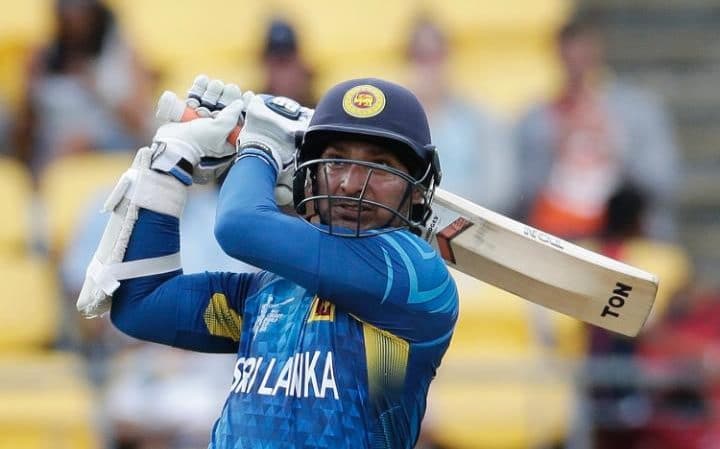“What do you think? How’s it looking?” It was another practice session at the Premadasa Stadium in Colombo, and Kumar Sangakkara was as inquisitive and conscientious as ever. And very precise. He wanted his back foot to move from middle and leg to middle and off. Not forward or back – just a fraction across, which allowed his shoulders and hips to align when facing right-arm seamers.
I was in the first of two coaching stints with Sri Lanka, as an assistant to Trevor Bayliss (a few years later I would return as head coach), and was doing my best to keep on top of the session. But I could see Sanga was hitting the ball nicely. “Brilliant,” I told him. “No problems whatsoever.”

He was unimpressed with my forensic analysis. “The first 10 balls I faced, I moved my back foot in four or five different ways,” he said. “If I ever ask you again, tell me the truth or don’t tell me anything.” It was a big lesson for me as a coach. And it told me plenty about Kumar Sangakkara.
One of Sanga’s first deeds after I arrived was to make 192 at Hobart after Australia had set us 507. We made 410, and Sanga was given out by Rudi Koertzen, caught at slip off shoulder and helmet: a stinker. That night we were in the hotel bar when the umpires walked in. There was a pause, then Sanga stepped forward: “Rudi! What can I get you to drink?”
If that was typical of him, so was the way in which he used that innings to get even better. Over a year later – by which stage he already had more than 6,000 Test runs – we were in the indoor school at Colombo’s SSC. Sanga couldn’t quite get his movements right, so he asked our analyst to access footage of the Hobart innings. He wanted to check the movement of his left foot in relation to Brett Lee’s delivery stride. Once he’d absorbed the information he needed, he was ready to bat again.
Nothing distracted him from his practice. There were times when, frankly, this made him a pain in the backside. Net sessions could last anything from 20 minutes to an hour. When he was wearing his game head, there was a selfishness about him. But no one minded, because that selfishness was usually for the greater good.
Every coach who worked with him knew you ended up needing reconstructive shoulder surgery. And your throwdowns had to be accurate. I was giving him a few at Sydney, and in the previous game he’d missed a couple of square-drives, so I thought I’d throw one or two a little wider. He left the first alone, and just looked at me. When I did the same again a few balls later, he stared back, then walked straight past me and into the dressing room. We never mentioned it again, but I got the message.

Despite being an outsider, I was always made to feel welcome. The number of dinners he and Mahela paid for got a bit embarrassing, but that’s the Sri Lankan way. I remember how well they looked after some of the Yorkshire lads when they were on a training camp in Sri Lanka. His wife, Yehali, cooked dinner one night and a few of us were invited over. He and Andrew Gale, whom he’d never met before, spent two hours talking about being left-handers – how to hit over the top, how to deal with the rough and the swinging ball and different angles of attack. Sanga won’t thank me for saying this, but he’s a proper cricket badger.
He put his considerable brain to good use, though it was better if you weren’t on the receiving end. If he was ever in danger of losing an argument (which I believe is yet to happen), he would adopt one of two tactics: speak more loudly, or use words you’d never heard of. He would dazzle you into submission. No wonder he once trained to be a lawyer.
His best sledge was aimed at Nasser Hussain in Sri Lanka in 2003-04, when England were playing in Kandy. Nasser had called Murali – the hometown hero – various names, so the locals weren’t best pleased. And it’s fair to say Nasser was a bit grumpy with his own team-mates too. When he came in to bat, Sanga piped up with: “What’s it like to be hated by both teams?” It wasn’t abusive, but he knew how to get under your skin.
When I left Sri Lanka to join England in 2014, I wasn’t very comfortable about the fact that my first series was against my old team. A few people had accused me of leaving for the money, which was never the case, but Sanga broke the ice ahead of the opening international of the tour, a Twenty20 match at The Oval. As I was walking up the steps to the pavilion, he was at the top. There were quite a few journalists waiting around, and he shouted down: “Traitor! Traitor’s here. Don’t talk to him, boys.”
That was Sanga to a T: he was mischievous, quick-witted and charming, and everyone loved him for it. Sri Lankan cricket will miss him like mad.
Paul Farbrace, England’s assistant coach, was assistant coach of Sri Lanka between 2007 and 2009 and head coach in 2013-14



















